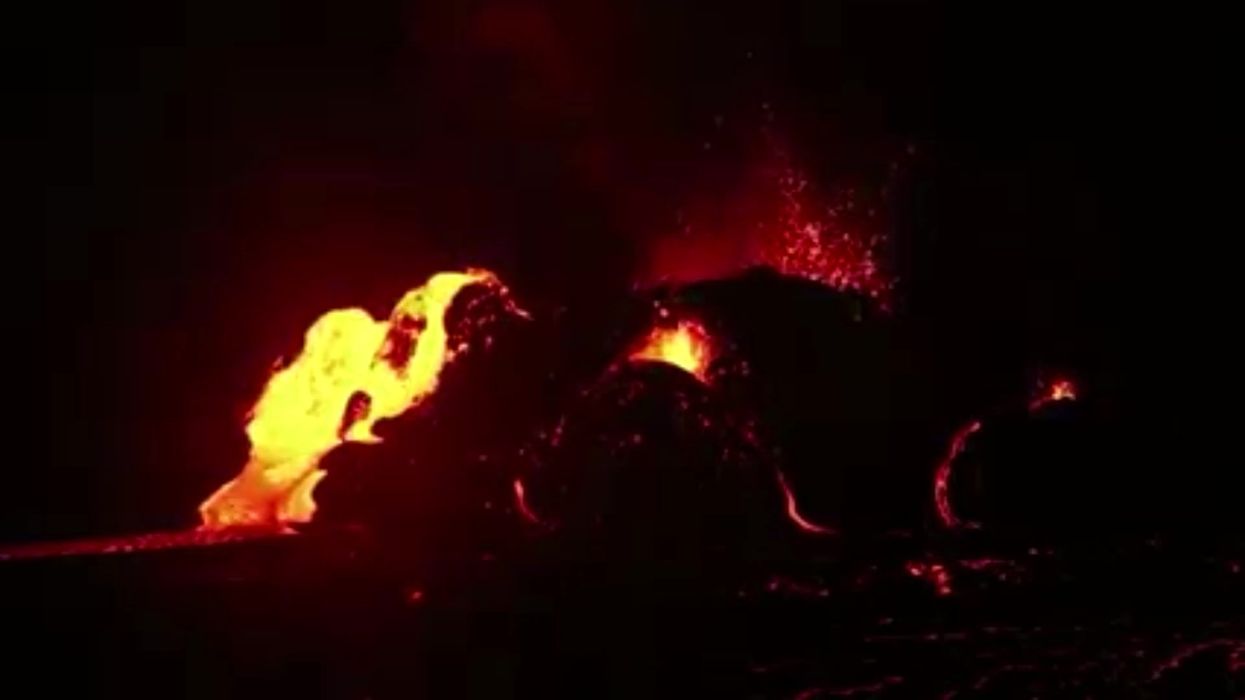Catherine Shuttleworth
May 28, 2024
Video shows river of lava pouring from Kīlauea Volcano in Hawaii
Hawai'i Volcanoes National Park
Six years since the Kīlauea volcano in Hawai'i erupted, volcanologists have only just been able to identify a new cause to explain the eruption.
In May 2018, the Kīlauea volcano erupted repeatedly in quick succession, driving ash more than 9,000 metres (30,000 feet) into the sky.
When the eruption of the Halema'uma'u crater initially occurred, it was compared the same volcano's 1924 eruption.
Explosive volcanic eruptions are usually attributed to either magma fragmenting during decompression or vaporised groundwater. However, the eruption of Kīlauea didn't involve either.
Dr Josh Crozier said in a statement: "These eruptions are quite interesting in that they don't really seem to involve either of those. The eruptive material contained very little that looked like fresh magma that was blasted out, but there’s no evidence for significant groundwater being involved, either.”
Thankfully, Kīlaueu is covered with sensors, and it was possible to watch the event repeat, due to the 12 explosions in days being consistent with each other.
“This remarkably repeatable sequence is among the best recorded explosive eruptions in the world,” Crozier and co-authors write.
Magma drained from an underground reservoir 40 kilometres (25 miles) away, which is where the lava flows came from. Crozier and colleagues concluded that the falling magma caused a series of earthquakes above, increasing pressure in the reservoir.
The reservoir also contained magmatic gas and rubble, which the pressure increase blasted through a vent into the crater above. This is known as the "stomp-rocket" effect, named after the top launched by stepping hard on an air bag.
“The ‘stomp’ is this whole kilometer-thick chunk of rock dropping down, pressurizing the pocket, and then forcing material directly up,” Crozier said. Modelling performed by Crozier and his team shows the explanation to be plausible.
The extensive monitoring conducted as well as the fact that the eruption was a repeated event allows volcanologists to link the properties of the plume the eruption produces with the geophysical observations.
“This link is very rare,” said Professor Joe Dufek. “It points to new ways for us to observe eruptions and to combine sensor measurements with computer simulations to better assess hazards from eruptions.”
Sign up to our free Indy100 weekly newsletter
Have your say in our news democracy. Click the upvote icon at the top of the page to help raise this article through the indy100 rankings.
How to join the indy100's free WhatsApp channel
Top 100
The Conversation (0)













